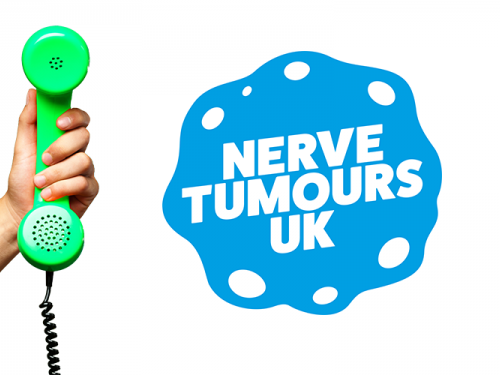Breast Cancer in Neurofibromatosis Type 1
31 October 2024
Breast Cancer in Neurofibromatosis Type 1
Author: Professor D. Gareth Evans, Chair, NTUK Medical Advisory Board.
Professor Evans has established a national and international reputation in clinical and
research aspects of cancer genetics, particularly in Neurofibromatosis and breast cancer.
Summary - Common Cancer Predisposition
Breast Cancer
For many years, evidence of increased risk of common cancers in patients with NF1 was largely limited to anecdotal case reports. However, in 2006, Walker et al reported an increased cancer risk 2.7 times higher than the general population in a UK cohort of 448 individuals with NF1. This excess risk was largely constrained to patients younger than 50 years, with the greatest excess seen in known NF1-associated malignancies such as sarcoma and brain tumours. The Standard Incidence Ratio (SIR) for breast cancer in all 227 females included did not reach statistical significance. However, in women aged less than 50, the SIR rose to 4.02. While this marked increase in risk in younger women was not emphasised in the original report, a similarly elevated risk was confirmed a year later in younger female patients in our NF1 cohort from North-West England in women below 50 years of age.
This finding was replicated in two US studies comparing breast cancer incidence in separate NF1 cohorts compared to population-based cancer incidence data from the Surveillance Epidemiology and End Results (SEER) registry. In a UK population-based study reported in 2015, Seminog and Goldacre used Hospital Episode Statistic (HES) to identify 3672 women with NF1 with at least one inpatient episode during the study period, 58 of whom were diagnosed with breast cancer. The authors emphasised that the estimated absolute risk per year in women aged 30-39 with NF1 (1 in 359) was equivalent to the general population aged 50-59 (1 in 363), an age group who were offered 2-3 yearly mammographic screening in most developed health systems. In a compelling and comprehensive study of NF1-associated cancer risk in Finland, the authors employed data from all secondary and tertiary medical centres covering the entire 5.4 million Finnish population from 1987-2011. Females with NF1 were identified and verified according to NIH criteria and breast cancer-specific survival compared with matched controls from the Finnish Cancer Registry. The overall Standard Incidence Ratio for breast cancer was again much higher, at 11.1 fold higher, in women younger than 40 years, equivalent to a 5% or 1 in 20 risk aged 30-39.
In their follow up analysis, Uusitalo et al examined the clinico-pathological characteristics of the breast cancers diagnosed in NF1 compared to controls . Tumour samples were analysed from 26 of 32 NF1-related breast cancer cases and compared with analyses of 5 controls per NF1 sample. The NF1 breast cancers were significantly larger and more likely to be higher grade.
Taken together, these epidemiological studies reflect an approximate twofold increase in lifetime risk of breast cancer associated with NF1, with a relative incidence between 4 to 11 times that of the general population in women below aged 50, by which age at least half of NF1-associated breast cancers will have occurred (compared to less than 20% in the general population). The highest relative risk in NF1 is in women younger than 40 years of age, with mortality rates higher than in the general population . The cumulative risk for breast cancer by the age of 40 years is 4.7%, over 10 times that of the general population. This absolute risk rises to around 10% by age 50 years in NF1, although at this age, relative risk compared to the general population is only approximately doubled.
Contralateral risk and survival In a 5-country cohort study, Evans et al showed that the risk of a contralateral second breast cancer in 142 women with NF1 was 26% during the 20 years after the first breast cancer, which is approximately double the risk of a second breast cancer in a general population . Outcomes after a second NF1-associated breast cancer were worse than predicted for the average population and especially poor in women who had not received enhanced screening.
Screening implications
It is recommended that, for people with a heritable cancer predisposition, breast cancer screening be commenced at an age where risk exceeds that when routine screening is offered to the general population. In NF1, this is at the age of 30, where, as per above, the estimated risk has been reported at approximately 2-5%. However, early breast screening generates two major concerns: First, the safety of mammography in NF1 patients, especially if started at a very young age, is unknown. Although the radiation exposure is low with mammography, NF1 patients have been shown to develop secondary malignancies in the radiation field from therapeutic ionizing radiation (albeit from childhood irradiation in the brain). Secondly, the lower specificity of MRI may lead to a high rate of false positive findings, with the unnecessary core biopsy of lesions that may turn out to be benign neurofibromas rather than breast cancer.
Although digital mammography is the gold standard for screening for early-stage breast cancer, confident identification of malignancy in NF1 patients may be challenging, due to the high number of neurofibromas in some women. The structure of the mammary gland tissue in young patients may also compromise interpretation. Repeated radiation exposure may increase the risk of other cancers, so screening with breast MRI should be the primary approach if available.
Currently in the UK as per NICE guidelines women with NF1 are only likely to be offered annual mammography aged 40-49 and then go into the population 3-yearly programme. However, if women with NF1 have additional risk factors they may qualify for screening earlier.
Treatment of NF1 breast cancers
Recommended treatment of NF1-associated breast cancer is similar to that in the general population. Risk-reducing mastectomy is not recommended in NF1 patients as there are no data regarding its benefit; however, it may be suggested based on family history and for the contralateral breast in NF1 women with stage 1 breast cancer at young ages, as there is a 1% annual risk of contralateral breast cancer in those with treated unilateral disease. It has been shown that, in ER+ breast cancer cell lines, NF1 loss confers resistance to endocrine therapy in a manner that can be reversed by CDK4/6 inhibition. As such, thought should be given to addition of CDK4/6 inhibitors to endocrine therapy and/or earlier reversion to non-endocrine therapies in advanced NF1-associated breast cancers.
If you have any questions about breast cancer screenings, or on any other topics covered in this article, please call our Helpline on 07939 046 030 operating Monday, Wednesday, Friday 9am to 5pm.




